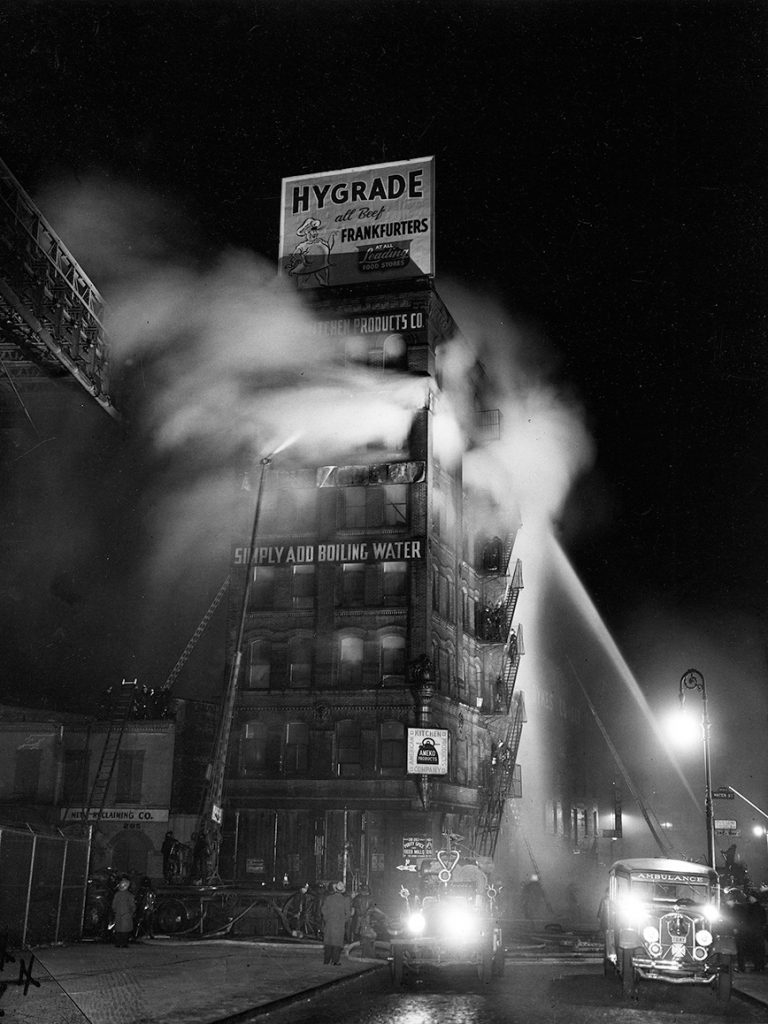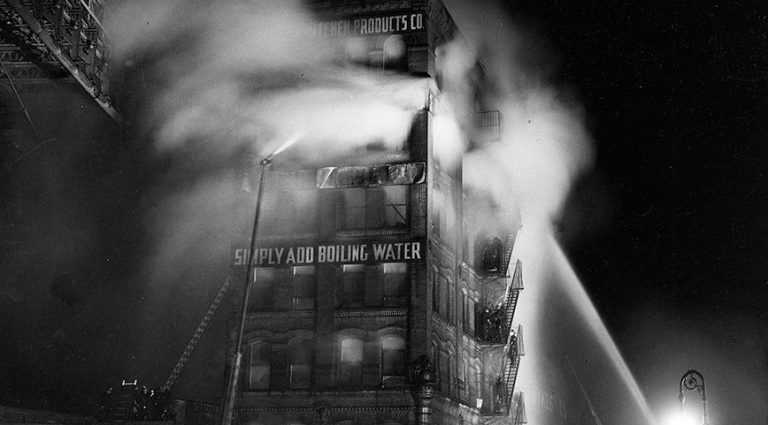ADVERTISEMENT
This summer, Side Gallery will transport visitors to the Mid-20th Century streets of New York, Paris and Newcastle with their exhibition tryptic, Classic Street Style: Weegee, Doisneau, Forsyth, which opened this weekend. These free exhibitions showcase three celebrated approaches to street photography, vividly capturing life across different cities.
Weegee and Robert Doisneau are two of the world’s most famous and renowned documentary photographers whose work is held in the region’s AmberSide Collection. They will be exhibited alongside Jimmy Forsyth, an outstanding and revered local photographer whose engaging images documented the spirit and transition of Newcastle’s West End.
As Kerry Lowes, the curator of Classic Street Style, explains:
“Weegee, Doisneau and Forsyth all took a humanistic approach in documenting the rhythm of life that surrounded them, but all did so in their unique way. Weegee developed a direct and uninhibited style, juxtaposing grandeur with destitution and highlighting the spectacle of life alongside the shock of sudden death in the “city that doesn’t sleep”.
“Doisneau poetically captured everyday life in the working-class Parisian suburbs with warmth, optimism and humour. He showed the world as he would like it to be.
“And Forsyth had the insight to recognise the transience of his community and their lived environment in a small area of the West End of Newcastle and took the time to document its changing state. The three exhibitions remind us that although human environments may differ and are in a perpetual state of flux, the human condition remains endlessly fascinating and constant.”
Weegee
Weegee’s stark black and white street photography came to define New York in the 1930s, 40s and 50s. Born Usher Fellig in Austria (now Ukraine) in 1899, Fellig was a self-fashioned, relentless self-promoter whose now iconic images show us a “warts and all” insider view of the extremes of life during the economic trauma of the Great Depression and beyond. Gangland murders, brutal crimes, accidents and devastating fires. Inhabitants of the great melting pot exist cheek by jowl in tenements and on the streets through sweltering summers and harsh winters, their ability to find moments of unbridled joy and love regardless testament to the resilience of human nature.


It is said that Weegee phonetically adapted his name with reference to the Ouija board and his uncanny skill at being in the right place when a dramatic story broke – sometimes, even before the police. His best-selling book Maked City published in 1945, helped to create the mythology of the city. In 1981 Side Gallery organised the first major UK exhibition and tour of Weegee’s work and has the largest collection of his prints outside of the USA.
Doisneau
Robert Doisneau is one of France’s most noted photographers, an internationally renowned pioneer of photojournalism and a champion of humanist photography. During his long career, his poetic approach to street photography recorded French everyday life in often playful and surreal images. His playground was the suburbs, often seen as banal and mundane; Doisneau’s pictures counter this stereotype and capture moments of meaning, beauty and humour. The particular interest he took in working-class environments led to images rich in poetic social realism, which profoundly influenced the film and literature of its time. He photographed a vast array of people and events in images marked by an exquisite sense of humour, anti-establishment values, and, above all, his deeply felt humanism. His most famous image, “Kiss at The Hotel De Ville”, represents a romantic idea about Paris that persists to this day.


Forsyth
Originally from Barry in South Wales, Forsyth came to Tyneside in 1943, aged 30, as part of the war effort. Following an industrial accident in which he lost an eye, Forsyth began his documentation of his neighbourhood after buying a camera in a pawn shop in 1954. His presence in the West End of Newcastle also coincided with major social change, as terraced housing and heavy industry gave way to high-rise flats and green space. He overcame financial and physical impairment to undertake a decades-long commitment to documenting his community, producing a remarkable and authentic body of work.


Forsyth’s first exhibition at Side Gallery came in 1981. A subsequent TV documentary and the publication of Scotswood Road by Bloodaxe Books in 1986 accelerated his career. His portrayal of working-class industrial life in Tyneside, including the demolition of the first Scotswood Bridge in 1967, received wide recognition for its authentic representation.
Laura Laffler, AmberSide co-director, added:
“As proud custodians of the best international classic documentary photography and work of equal calibre that relates directly to the region, we are eager to invite visitors to see these images, which are jewels in our collection. These photographs provide a candid view of everyday life of those people who called New York, Paris and Newcastle their home in the 1930s, 40s and 50s.”
Classic Street Style: Weegee, Doisneau, Forsyth, which was made possible with kind support from Arts Council England and Community Foundation Tyne & Wear, opens on Saturday 30 July and is on display until Sunday 9 October 2022. Side Gallery is open Thursday and Friday from 11 am to 5 pm and Saturday and Sunday from 12 pm to 5 pm. Admission is free. For more information visit www.amber-online.com/side-gallery.

We need your help! The press in our country is dominated by billionaire-owned media, many offshore and avoiding paying tax. We are a citizen journalism publication but still have significant costs. If you believe in what we do, please consider subscribing to the Bylines Gazette 🙏


